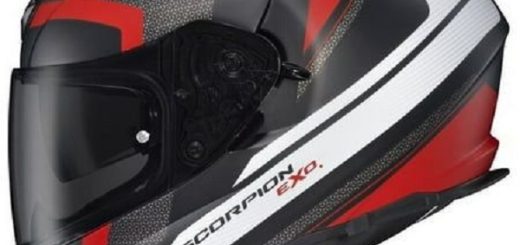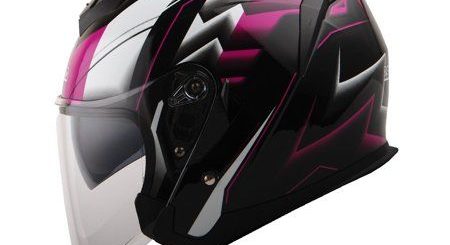How to Wear a Motorcycle Helmet?
Your motorcycle helmet is your essential safety gear. It shields your head in the unfortunate event of an accident, and ensuring a proper fit is paramount for optimal protection. But a good fit goes beyond just size – knowing how to wear your helmet correctly is crucial.
This comprehensive guide will equip you with the knowledge and techniques to wear your motorcycle helmet safely and comfortably. We’ll delve into the importance of a snug fit, explore step-by-step instructions for putting on your helmet, and address common mistakes to avoid. By following these tips, you can transform helmet use from a chore to a confident routine, ensuring you’re ready to hit the road with complete peace of mind.
Understanding Helmet Fit: The Foundation of Safety
A properly fitting helmet is the cornerstone of effective head protection. A helmet that’s too loose can move around in a crash, reducing its ability to absorb impact and potentially causing injuries. Conversely, a helmet that’s too tight can be uncomfortable and lead to headaches or pressure points.
Here’s why a snug fit matters:

-
Impact Absorption: The helmet’s liner is designed to compress during a crash, absorbing the force of the impact and protecting your head. A loose helmet allows excessive movement, hindering the liner’s ability to function effectively.
-
Reduced Wind Noise: A snug helmet minimizes wind noise and buffeting, enhancing your riding comfort and focus on the road.
-
Improved Stability: A properly fitted helmet stays securely in place, even at high speeds, preventing it from slipping or tilting during your ride.
Remember: When trying on helmets, prioritize a snug fit that feels secure without being uncomfortably tight.
Gearing Up for Safety: A Step-by-Step Guide to Wearing Your Helmet
Now that you understand the significance of a snug fit, let’s explore how to wear your motorcycle helmet properly:
-
Pre-Ride Check: Before putting on your helmet, perform a quick visual inspection. Ensure the visor is clean and free of scratches, and the chin strap is in good working condition.
-
Open the Visor: Lift the visor completely to create ample space for your head.
-
Unfasten the Chin Strap: Locate the chin strap buckle and release it completely.
-
Position the Helmet: Hold the helmet by the sides of the shell, not the visor. Tilt the helmet forward slightly and place it over your head.
-
Snug Fit: Gently guide the helmet down over your head, ensuring a snug and even fit. The helmet should feel secure without causing pressure points on your forehead or temples.
-
Secure the Chin Strap: Fasten the chin strap buckle and tighten it to a snug but comfortable fit. You should be able to fit a single finger between the strap and your chin.
-
Visor Check: Lower the visor and ensure it closes securely without obstructing your vision.
-
Head Movement Check: Once your helmet is secured, perform a head check by turning your head from side to side. The helmet should move slightly with your head, but not excessively.
Pro Tip: Practice putting on and taking off your helmet at home before your ride. This ensures you can perform the steps quickly and smoothly, especially if you need to remove your helmet in an emergency situation.
Common Mistakes to Avoid: Ensuring a Secure and Comfortable Helmet Experience
Even experienced riders can make mistakes when putting on their helmets. Here are some common pitfalls to avoid:

-
Forcing the Helmet On: If the helmet feels difficult to put on, it might be too small. Don’t force it on, as this can damage the helmet or cause discomfort. Consider trying a larger size for a proper fit.
-
Loose Chin Strap: A loose chin strap compromises the helmet’s effectiveness in a crash. Ensure the chin strap is snug but comfortable enough to allow for slight movement.
-
Hair Obstructions: Loose hair can get caught in the helmet’s liner or visor mechanism. Tie back long hair or wear a helmet liner to prevent this.
-
Wearing Jewelry: Wearing earrings, necklaces, or other jewelry under your helmet can be uncomfortable and potentially dangerous in a crash. Remove any jewelry before putting on your helmet.
-
Ignoring Damage: Inspect your helmet regularly for signs of wear and tear, such as cracks, deep scratches, or a loose or damaged liner. Replace your helmet if you notice any damage.
By being aware of these common mistakes, you can ensure your helmet offers optimal protection and a comfortable riding experience.
Finding Your Perfect Fit: Selecting the Right Helmet Size
While a snug fit is crucial, it’s important to choose the correct helmet size in the first place. Wear a motorcycle helmet come in various sizes, typically ranging from XS to XXL, and some brands offer additional intermediate sizes for a more precise fit.
Here are some tips for selecting the right helmet size:

-
Measure Your Head: Use a soft measuring tape to measure the circumference of your head just above your eyebrows. Consult the manufacturer’s size chart to find the corresponding helmet size for your head measurement.
-
Try Before You Buy: Whenever possible, try on different helmet sizes before purchasing. A reputable motorcycle gear store will have a knowledgeable staff to assist you in finding the perfect fit.
-
Snug Yet Comfortable: The helmet should feel snug and secure when placed on your head. You shouldn’t experience any pressure points or excessive movement. However, it shouldn’t be so tight that it causes discomfort.
-
The Cheek Pad Test: With the helmet on and the visor open, try to gently slide your cheeks back and forth. There should be slight movement, but the cheeks shouldn’t be able to compress comfortably.
-
The Head Shake Test: Once the helmet is secured, gently shake your head from side to side. The helmet should move slightly with your head, but it shouldn’t wobble excessively.
Remember: If you’re between sizes, it’s generally better to choose the smaller size. The helmet’s liner will conform to your head shape over time, providing a snugger fit.
Beyond the Basics: Personalized Comfort and Safety Enhancements
While a proper fit is essential, there are additional steps you can take to personalize your helmet for optimal comfort and safety:

-
Helmet Liners: Helmet liners offer a layer of moisture-wicking fabric that helps keep your head cool and comfortable during rides. Liners are also removable and washable, allowing you to maintain helmet hygiene.
-
Cheek Pads: Some helmets come with interchangeable cheek pads in different thicknesses. This allows for a more customized fit around the cheeks, especially if you find the standard cheek pads too loose or tight.
-
Communication Systems: Many helmets are now compatible with communication systems that allow you to connect with fellow riders or use your phone hands-free. Consider your riding needs when deciding if a communication system is right for you.
-
Anti-Fog Visor Inserts: Fogging can be a significant issue, especially in colder weather. Investing in an anti-fog visor insert or using an anti-fog spray can help keep your vision clear while riding.
-
Tinted or Mirrored Visors: Tinted or mirrored visors can reduce glare and eye strain on sunny days. However, ensure the visor tint complies with legal regulations in your area.
By exploring these personalization options, you can tailor your helmet to your specific needs and preferences, enhancing both comfort and safety during your rides.
Invest in Your Safety: Don’t Compromise on Quality
Wear a motorcycle helmet is an investment in your safety. When purchasing a helmet, prioritize quality over price. Look for helmets that meet safety standards like DOT (US Department of Transportation) or ECE (Economic Commission for Europe).
Here are some key considerations when choosing a motorcycle helmet:

-
Shell Material: Helmets are typically made from lightweight yet strong materials like polycarbonate or composite materials. A high-quality shell offers optimal impact protection.
-
Liner Material: The helmet’s liner is responsible for absorbing impact energy. Look for helmets with EPS (Expanded Polystyrene) liners known for their energy-absorbing properties.
-
Visor Quality: The visor should be clear, distortion-free, and made from a scratch-resistant material. Consider a visor with a quick-release system for easy removal and replacement.
-
Ventilation System: A well-ventilated helmet allows for airflow, helping to keep your head cool and comfortable during rides.
-
Brand Reputation: Choose a helmet from a reputable motorcycle gear manufacturer known for its commitment to safety and quality.
Remember, your helmet is your most crucial safety gear. Don’t settle for a cheap, low-quality helmet that might not offer adequate protection in a crash.
The Takeaway: Ride Smart, Ride Safe
By following the tips and information outlined in this guide, you can transform helmet use from a routine to a safety ritual. Wear a motorcycle helmet correctly, choosing the right one for your needs, and maintaining it properly are all essential steps towards maximizing your safety on the road.
Motorcycle riding can be an exhilarating experience, but it’s crucial to prioritize safety. Equipping yourself with the right knowledge and gear is paramount. We hope this guide has served as a valuable resource in your motorcycle safety journey.


